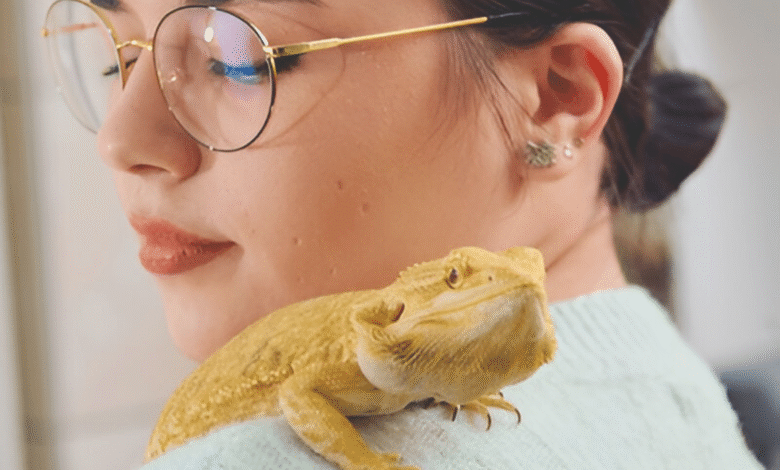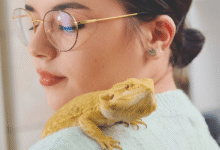
Top 5 Mistakes New Reptile Owners Make
Reptile Owners care mistakes can harm your pet Discover the top 5 errors new owners make and how to avoid them for a healthy, happy reptile.
Reptile Owners can be an incredibly rewarding experience, but it comes with unique challenges that many new pet owners underestimate. Unlike traditional pets, reptiles have highly specialized care requirements that, if ignored, can lead to serious health issues or even premature death. From improper habitat setups to inadequate nutrition, many beginners unknowingly make critical mistakes that compromise their scaly companion’s wellbeing. Understanding these common pitfalls is the first step toward becoming a responsible reptile keeper.
Whether you’re caring for a bearded dragon, ball python, or leopard gecko, proper Reptile Owners demands research, preparation, and commitment. Many first-time owners mistakenly assume reptiles are low-maintenance pets, only to realize too late that these creatures need precise temperature regulation, species-specific diets, and proper handling techniques. This guide will explore the top five mistakes new Reptile Owners make and how to avoid them so you can provide your pet with a healthy, thriving environment.
Top 5 Mistakes New Reptile Owners Make
Incorrect Habitat Setup
One of the most common mistakes new Reptile Owners make is setting up an inadequate habitat. Reptiles are ectothermic, meaning they rely on their environment to regulate body temperature. A poorly designed enclosure can lead to temperature imbalances, low humidity, or insufficient hiding spots**, causing stress and health problems. For example, a bearded dragon requires a basking spot of 95-110°F and a cooler zone around 75-85°F. Without this gradient, the reptile cannot thermoregulate properly. Similarly, tropical species like crested geckos need high humidity (60-80%), while desert species like leopard geckos thrive in drier conditions. Investing in a thermostat, hygrometer.
Poor Feeding Practices
Another major mistake is improper feeding. Different reptiles have unique dietary needs, and feeding the wrong foods or incorrect portions can lead to malnutrition or obesity. For instance, herbivorous tortoises require leafy greens and vegetables, while carnivorous snakes need appropriately sized rodents. Many new owners overfeed their reptiles, thinking more food equals better health. However, obesity is a growing issue in captive reptiles, especially in species like bearded dragons and ball pythons.
Handling Reptiles Too Soon or Too Much
While some reptiles tolerate handling better than others, many new owners make the mistake of overhandling their pets, especially during the acclimation period. Reptiles need time to adjust to their new environment, and excessive handling can cause stress, leading to refusal to eat or aggressive behavior. For example, a new ball python may need 1-2 weeks to settle in before being handled. Even then, sessions should be short (5-10 minutes) and gradual. Some species, like chameleons, are highly sensitive and may never enjoy handling. Forcing interaction can weaken their immune system and increase stress hormones.
Ignoring Veterinary Care
Many new Reptile Owners assume that these animals don’t need regular veterinary check-ups, leading to undiagnosed health issues. Reptiles are masters at hiding illness a survival instinct in the wild so by the time symptoms appear, the condition may be severe. Common health problems include respiratory infections (due to incorrect humidity), parasitic infestations, and mouth rot (stomatitis). A qualified exotic vet can detect early signs of disease through stool test and physical assessments. Unfortunately, many owners only seek help when their reptile stops eating or becomes lethargic, which may be too late.
Lack of Research Before Purchase
Impulse Buying Leads to Problems
Many new owners purchase reptiles spontaneously without understanding their complex needs. This often results in improper care, stress for the animal, and frustration for the owner. Researching species-specific requirements prevents these avoidable mistakes.
Underestimating Size and Lifespan
Beginners frequently don’t realize some Reptile Ownersgrow much larger or live longer than expected. Iguanas reach 6+ feet, while tortoises can outlive their Reptile Owners. Failing to plan for adult size leads to cramped, unhealthy enclosures.
Ignoring Specialized Care Requirements
Each species has unique temperature, humidity, lighting and dietary needs. Without proper research, owners may provide incorrect UVB exposure, wrong foods, or unsuitable habitat conditions that jeopardize their pet’s health.
Overlooking Financial and Time Commitments
Reptile Owners require expensive equipment (thermostats, lighting), ongoing food costs, and daily maintenance. Many unprepared owners struggle with these long-term investments, leading to neglected care or rehoming situations.
Missing Critical Behavioral Knowledge
Some Reptile Owners are solitary, others need social interaction; some tolerate handling while others don’t. Not understanding species-specific behaviors can lead to stress, aggression, or health issues from improper care routines.
Solutions to Common Reptile Owner Mistakes
Research Before Purchasing
Always study species requirements for size, lifespan, and care needs before acquiring any Reptile Owners. Consult expert care sheets, join reptile forums, and speak with experienced keepers to understand long-term commitments. Avoid impulse purchases that lead to unprepared ownership situations.
Perfect Habitat Setup
Invest in proper heating, lighting, and enclosure size specific to your reptile’s natural habitat. Use digital thermometers/hygrometers to maintain ideal temperature gradients and humidity levels. Include appropriate hides, climbing branches, and substrate to reduce stress and mimic wild environments.
Proper Feeding
Learn your reptile’s specific dietary needs (herbivore/omnivore/carnivore) and feeding schedule. Gut-load insects and dust with calcium/D3 supplements for insectivores. Provide fresh vegetables for herbivores and properly sized prey for carnivores to prevent nutritional deficiencies.
Scheduled Health Maintenance
Locate an exotic vet before issues arise and schedule annual check-ups. Quarantine new Reptile Owners for 30-90 days before introducing them to existing pets. Monitor weight, shedding, and droppings regularly to catch health problems early.
Responsible Handling Techniques
Limit handling during initial acclimation periods (1-2 weeks). Keep sessions brief (5-15 minutes) and watch for stress signals like hissing or fleeing. Wash hands before/after handling to prevent bacterial transmission and always support the body properly.
Continuous Education
Stay updated on reptile care advancements through books, reputable websites, and herpetological societies. Keep detailed records of feeding, shedding, and behavior patterns to better understand your pet’s needs over time.
Read More: How to Clean a Fish Tank Without Harming Your Fish
Conclusion
Reptile Owners is a fulfilling journey that requires dedication, patience, and proper knowledge to ensure your scaly companion thrives. By avoiding common mistakes like improper habitat setup, incorrect feeding, and inadequate veterinary care, you can create a healthy environment for your pet. Remember, Reptile Owners have specific needs that differ greatly from traditional pets, and meeting these requirements is essential for their long-term wellbeing.
Whether you’re a first-time owner or an experienced keeper, continuous learning is key to successful Reptile Owners. Always stay updated on best practices, consult with exotic veterinarians, and prioritize your pet’s natural behaviors and needs. By doing so, you’ll not only prevent health issues but also build a stronger bond with your reptile, ensuring many happy years together. Responsible ownership begins with education so keep researching, stay attentive, and enjoy the rewarding experience of caring for these fascinating creatures.
FAQs
What’s the biggest mistake new Reptile Owners make?
The most common error is improper habitat setup, including incorrect temperatures, humidity levels, or enclosure size for the specific species.
How often should I handle my new reptile?
Limit handling during the first 1-2 weeks while your reptile adjusts, then keep sessions brief (5-15 minutes) and watch for stress signals.
Do all reptiles need UVB lighting?
No, but most diurnal species (like bearded dragons and turtles) require UVB for proper calcium absorption and bone health.
Can I feed my reptile only insects?
Not all species herbivores need plants, omnivores require balanced diets, and even insectivores need variety (like gut-loaded crickets and worms).
How do I know if my reptile is sick?
Watch for lethargy, loss of appetite, irregular shedding, wheezing, or discolored stools and consult an exotic vet immediately if symptoms appear.







